Entry Denials & Criminal Inadmissibility (U.S. Citizens & Residents)
A&M Canadian Immigration Law Corporation
Entry Denials & Criminal Inadmissibility (U.S. Citizens & Residents)
If you’re a U.S. citizen or U.S. permanent resident (Green Card holder)
with a past criminal record, you can be refused entry to Canada. Two proven
pathways can get you moving again:
·Temporary
Resident Permit (TRP): a discretionary short-term solution when you
have a compelling reason to travel, typically used when less than 5 years have
passed since you finished your sentence.
· Criminal
Rehabilitation: a permanent solution that removes the
inadmissibility for immigration purposes, available only after enough time has
passed (see eligibility below).
Below is a practical, step-by-step guide tailored to U.S. travellers.
Step 1: Confirm you’re “criminally inadmissible”
Under Canada’s immigration law, people with past crimes or
convictions (even outside Canada) may be found criminally
inadmissible. Examples include DUI/impairment,
theft, assault, and drug offences. An officer decides at the visa stage (if
applicable) or at the border.
Step 2: Pick the right pathway for your timeline
A) Temporary Resident Permit (Less than 5 years since you finished your
sentence)
A TRP is a permit document that authorizes entry or
continued stay despite criminal inadmissibility when, in the officer’s view,
the need to travel outweighs the risk. It can be considered at a visa office or
at the port of entry, issued for a set period (often months, sometimes up to
three years), and may be cancelled at any time. It does not erase criminal
inadmissibility.
When appropriate: Typical where less than five years have
passed since completion of all parts of the sentence (see
calculation rules below), or where urgent travel is required before a
rehabilitation decision is possible. The assessment weighs: purpose of travel,
seriousness and pattern of offending, proof that all sentence terms are
finished, conduct since the offence, and whether a permanent remedy
(rehabilitation) is available.
Work/study while in Canada: If a TRP is valid for six months
or more, the holder (or certain family members) may apply in Canada for
a work or study permit during that
validity.
Bonus Point: If the TRP is valid ≥ 6 months, you may apply in Canada for a work or study permit during its validity.
B) Criminal Rehabilitation (5+ years since you finished your sentence)
Criminal Rehabilitation permanently resolves the inadmissibility
(for the offence(s) assessed). A one-time application that, if approved,
removes criminal inadmissibility for the offence(s) assessed. The result is a
written approval decision (approval letter). After approval, you still must be
admissible on other grounds and,
if applicable, hold the correct travel authorization. CR does not expire
for the covered past offences (unless you re-offend).
Core eligibility: You may apply when at least five (5) years have
passed since the end of every part of the sentence (custody, parole/probation,
payment of fines/restitution, mandatory programs, and any suspensions such as
driving prohibitions). IRCC also notes scenarios measured from the date of the
act when no conviction was entered.
Effect of approval: Once CR is approved, a TRP is no longer
required for those same offences, but routine admissibility checks
still apply (e.g., health, security). The CR approval letter itself is not a
travel document.
C) Deemed Rehabilitation
A no-application pathway available only when strict legal criteria are
met. Generally, a person may be deemed rehabilitated at the border if enough
time has passed since completion of sentence, the conduct maps to an offence in
Canada with a maximum penalty of less than 10 years, and other conditions are
satisfied. Officers determine this case-by-case; travellers must carry full
court records and proof of completion.
Typical thresholds (high-level):
- One foreign offence equivalent to an indictable offence in Canada with a maximum < 10 years → 10 years after completion of sentence.
Quick chooser (U.S. citizens & residents)
- Trip in the
near term, < 5 years since sentence completion: TRP at
the border or via visa office. Build a strong purpose-of-travel file.
- Long-term/ongoing
travel or settlement, ≥ 5 years since completion: Criminal
Rehabilitation so you don’t rely on TRPs. Start early.
Calculating the 5-year waiting period for CR
The five years normally run after the end of every part of the
sentence:
- Fines/restitution: from the date the last payment cleared;
- Probation: from the end of probation;
- Driving prohibitions: from the end date of the prohibition;
Custody/parole: from completion of custody and any parole terms. IRCC’s
guide provides worked examples (e.g., DUI licence suspension, short jail term +
completion dates).
Where to apply (TRP, Criminal Rehabilitation, Deemed Rehabilitation)
Temporary Resident Permit (TRP)
- Port of Entry (POE): A&M Law Canadian
Immigration can prepare that application that you may submit when
arrive at a Canadian land border or airport (discretionary decision made
on the spot).
- Before travel (visa office): ): A&M Law
Canadian Immigration can prepare that application that
U.S.–based applicants file by mail/courier to the Consulate General
of Canada in Los Angeles (Immigration Section).
Criminal Rehabilitation (Individual CR)
- Submit to a
visa office: U.S.–based applicants file by mail/courier
to the Consulate General of Canada in New York (Immigration Section). If
you’re also applying for a
visitor visa, study or work permit, you may be instructed to
submit together via a Visa Application Centre. Check the IRCC “where
to submit” tool for your country/region.
At-the-border realities (driving or flying from the U.S.)
- Discretion: TRPs are never guaranteed. Be prepared to demonstrate why you need to enter now and why you’re low risk.
What clients can expect from A&M Canadian Immigration Law
Corporation
A&M Canadian Immigration Law Corporation delivers a fully managed
pathway for travellers facing criminal inadmissibility whether the solution is
a Temporary Resident
Permit (TRP), Criminal
Rehabilitation (CR),
or Deemed Rehabilitation. The mandate is simple: a smooth, professional
experience with officer-ready
submissions.
- Clear pathway selection: Precise
eligibility mapping (TRP vs. CR vs. Deemed
Rehabilitation), offence-equivalency analysis under Canadian law, and
exact 5-year/10-year threshold calculations—so the right remedy is
chosen the first time.
- Evidence built to IRCC standards: Certified
court dispositions, proof of sentence completion (fines, probation,
suspensions), police certificates, and reform/character evidence that
is organized, indexed, translated, and cross-checked for consistency.
- Border and consulate readiness:
Port-of-entry (POE) briefing notes, document order,
and purpose-of-travel materials that speak to the “benefits outweigh
risk” test; guidance when
pairing CR with a visitor visa, work permit, or study permit. - Active file management: Proactive updates,
quick responses to officer requests, and clear next steps so clients
aren’t chasing portals or paperwork.
Ready to proceed? Cross the border with confidence by booking
your online Zoom Meeting consultation with A&M Canadian Immigration Law
Corporation. Book
Now!






